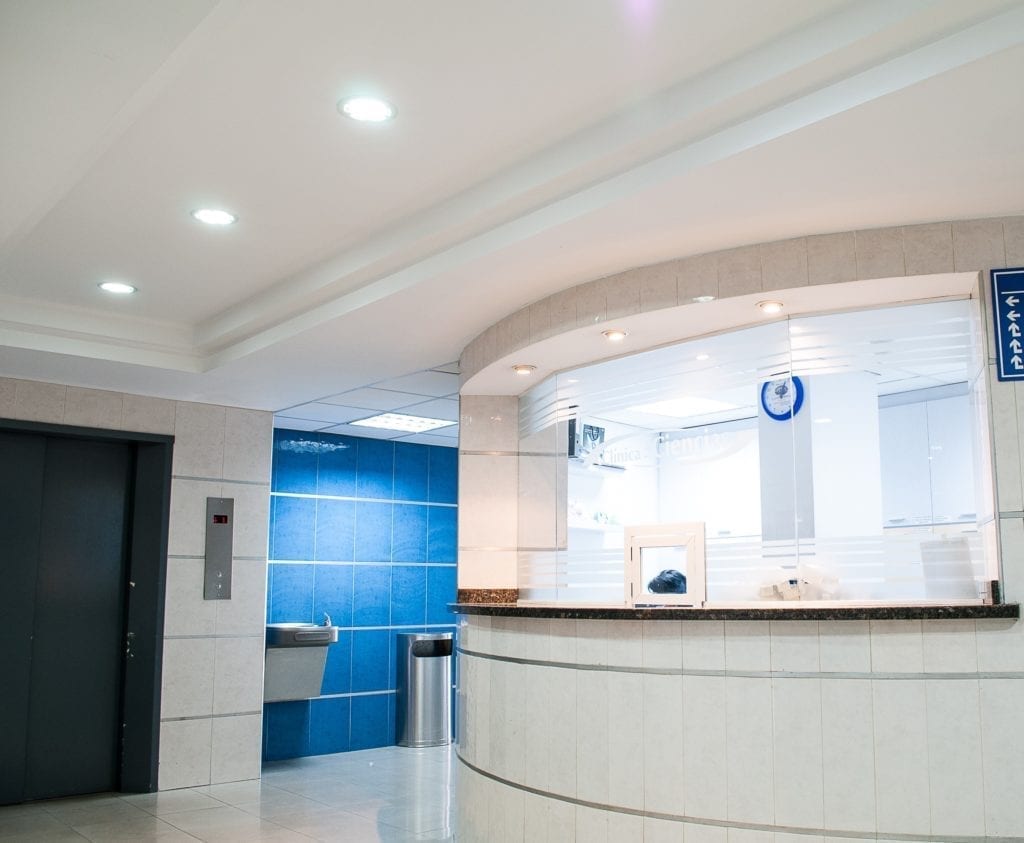SecurityInformed.com, a leading information site for the security industry, predicts that over the next decade healthcare will face an increase in security threats. That includes violent attacks and severe weather emergencies.
The Dangers Within
Why the increase in violence? Some studies indicate that hospitals are increasingly caring for potentially violent patients like prison inmates. Campus Safety magazine also cites the following factors as causes of the current rise of violence in healthcare facilities.
- Gang activity

- Increased presence of firearms or other weapons
- Lack of community mental health care and on-site mental health personnel
- Domestic disputes among patients or visitors
- Stressful conditions like long wait times or being given bad news about a diagnosis
- Understaffing especially during lunch hours and breaks
- Lack of staff training on how to recognize and deescalate violent situations
- Inadequate on-site security and lack of access to emergency communication
- Unrestricted public access to hospital and clinics
- Poor lighting in corridors, rooms, and parking lots
Tackling Today’s Threats
If you’re a healthcare security manager, you’re probably wondering how to keep your facility safe from these modern threats. Here are a few expert tips that will point you in the right direction.
Train Your Staff
Begin by making sure your staff is trained to deal with the health security essentials: patient safety, behavioral health, aggression management, crime management, self defense, deescelation tactics, and emergency procedures.
The International Association for Healthcare Security and Safety (IAHSS) offers several educational certification levels designed specifically for healthcare security officers. It also publishes security and design guidelines for healthcare facilities so your staff can stay on top of health security trends.
OSHA also offers the below resources:
Preventing Workplace Violence in Healthcare
Guidelines for Preventing Workplace Violence for Healthcare and Social Service Workers
Prep for Major Emergencies

Healthcare security managers should also plan ahead for major emergencies, like an active shooter incident. In an interview with Campus Safety magazine, John Montes, an NFPA emergency
services specialist says “hospitals need to be involved in these planning efforts because they receive the victims.” He also notes that shooter response programs are different from other hospital emergency programs because “they’re dynamic”. “They cause people to take action on their own. People are fleeing the scene, sometimes looking for ways to get to the hospital on their own, and
there’s not always a way to gauge how many people will be coming to the facility.”
So hospitals and clinics will need to sync their emergency management plans with organizations that designate their facility as a primary receiver of shooting victims. They should also develop a protocol for rapid screening of the hospital for devices and weapons if an active shooter incident occurs within or near the facility. In chapter 19, the new National Fire Protection NFPA 3000: Standard for an Active Shooter/Hostile Event Response Program, gives details on what this preparedness should look like.
Capture, Track, & Trend
One of the best ways to improve security is to learn from past mistakes, and incidents. Security managers should analyze workplace violence data to determine contributing factors and opportunities for intervention. The best way to do this is to capture, track, and trend all reports of workplace violence including verbal abuse and attempted assaults. Keep in mind, information about these incidents may come from multiple sources including hospital databases, human resources, employee surveys, and more. Once you’ve gathered data and created a report, regularly distribute it to clinic and hospital security guards as well as all affected staff. Then do your research and invest in cost-effective, evidence-based strategies to prevent future violence like better exit routes, panic alarms, regular security patrols, and environmental changes to facilitate deescalation and reduce hazards.
Establish a Reliable Security Station
Last but not least, install a security station or security podium that does it all. That means a security desk that serves as a checkpoint for your security staff to screen patients, employees, and visitors, as well as a place to store security and emergency equipment. Your security workstation should also be electronics-ready so your security team can quickly communicate during emergencies plus capture, track, and trend important security data.
Shop Security Podiums
You’ll find all the essential security station features we’ve discussed, and more, at The Security Station. Shop our customizable, electronics-ready stations now, or have your security manager contact us at 877-753-5971 and we’ll work with them to design a modern security podium sure to keep your healthcare facility equipped for threats and emergencies today, and in the future.

